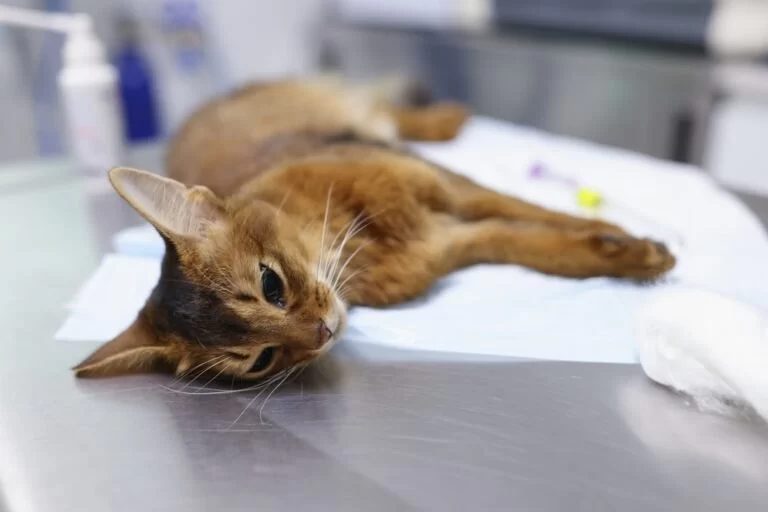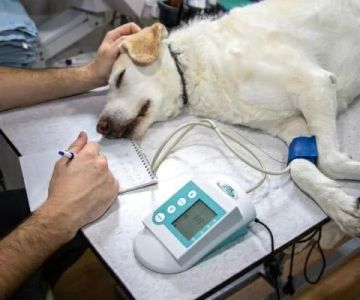Common Cat Illnesses: Symptoms, Diagnosis, and Treatment
- 1 - Introduction to Common Cat Illnesses
- 2 - Most Common Cat Illnesses
- 3 - How to Recognize Symptoms of Illness in Cats
- 4 - Diagnosis of Cat Illnesses
- 5 - Treatment Options for Common Cat Illnesses
- 6 - Preventative Care and How to Keep Your Cat Healthy
1 - Introduction to Common Cat Illnesses
As a cat owner, one of the most important responsibilities is ensuring your feline companion stays healthy and happy. However, just like humans, cats are susceptible to a variety of illnesses. While some of these conditions are relatively minor and easily treatable, others can be more serious and require immediate attention. Understanding common cat illnesses, how to recognize their symptoms, and knowing when to seek veterinary care are essential for maintaining your cat's well-being.
2 - Most Common Cat Illnesses
Cats are prone to several common illnesses, some of which can be more prevalent in certain age groups or breeds. The following are some of the most common conditions that affect cats:
- Feline Upper Respiratory Infections (URI): These infections are similar to a cold in humans and often cause symptoms like sneezing, nasal discharge, and coughing. URIs are highly contagious among cats and can be caused by viruses or bacteria.
- Feline Diabetes: Just like humans, cats can develop diabetes. Symptoms of diabetes in cats include excessive thirst, increased urination, weight loss, and lethargy. It is a serious condition that requires proper treatment and monitoring.
- Feline Lower Urinary Tract Disease (FLUTD): FLUTD is a collection of conditions that affect the bladder and urethra of cats. Symptoms include frequent urination, difficulty urinating, blood in the urine, or urinating outside the litter box. This condition can be life-threatening if not treated promptly.
- Hyperthyroidism: This condition occurs when a cat's thyroid gland becomes overactive, leading to symptoms like increased appetite, weight loss, vomiting, and hyperactivity. It is common in older cats and can often be managed with medication or surgery.
- Feline Leukemia Virus (FeLV): FeLV is a viral infection that suppresses the cat's immune system. It is highly contagious and can cause a variety of symptoms, including lethargy, weight loss, fever, and anemia. While there is no cure, supportive care can help manage the symptoms.
3 - How to Recognize Symptoms of Illness in Cats
Recognizing the signs of illness in cats can be challenging, as they are often good at hiding discomfort. However, there are several key symptoms to watch for that may indicate your cat is unwell:
- Changes in Appetite: A sudden increase or decrease in your cat's food intake can be a sign of illness, such as diabetes, thyroid problems, or digestive issues.
- Changes in Behavior: If your cat becomes more withdrawn, lethargic, or aggressive, it could be a sign that something is wrong.
- Vomiting and Diarrhea: While occasional vomiting or diarrhea can be normal, frequent occurrences or diarrhea with blood should be treated as a red flag.
- Difficulty Breathing: Rapid or labored breathing can indicate respiratory problems, such as a URI, asthma, or heart disease.
- Excessive Thirst or Urination: If your cat is drinking or urinating more than usual, it could be a sign of kidney disease, diabetes, or urinary tract issues.
4 - Diagnosis of Cat Illnesses
If you suspect your cat is ill, it's important to consult a veterinarian for a proper diagnosis. Your veterinarian will perform a physical examination and may recommend several tests, such as:
- Blood Tests: Blood work can help identify a variety of health issues, including infections, kidney function, liver health, and thyroid problems.
- Urine Tests: A urine test can help diagnose urinary tract infections, kidney disease, or diabetes.
- X-Rays or Ultrasound: Imaging may be necessary to check for issues with the heart, lungs, or internal organs.
- Cultures and Swabs: If your cat has a respiratory infection or skin issue, a culture or swab may be taken to identify the cause of the infection.
5 - Treatment Options for Common Cat Illnesses
The treatment for your cat's illness will depend on the specific condition and its severity. Here are some common treatment options:
- Medication: Cats with infections, diabetes, hyperthyroidism, or other conditions may require medication, either in the form of oral pills, injections, or topical treatments.
- Dietary Changes: A special diet may be recommended for conditions like diabetes, kidney disease, or urinary tract issues. Your vet can guide you on the best food for your cat's specific needs.
- Surgery: In some cases, surgery may be required, such as for tumors, urinary blockages, or thyroid issues. Surgery is typically a last resort after other treatments have been considered.
- Supportive Care: Cats with chronic conditions, such as FeLV or kidney disease, may require ongoing care to manage their symptoms and maintain a good quality of life.
6 - Preventative Care and How to Keep Your Cat Healthy
Preventing illness is always the best approach. Here are some tips to help keep your cat healthy:
- Regular Vet Visits: Schedule annual or semi-annual check-ups to catch any potential health issues early. These visits allow your vet to monitor your cat's health and provide vaccines, flea treatments, and dental care.
- Proper Diet: Feed your cat a balanced, age-appropriate diet to ensure they get the right nutrients for optimal health.
- Exercise: Encourage your cat to stay active through play and enrichment activities. A physically fit cat is less prone to certain health problems.
- Stress Management: Cats are sensitive to changes in their environment, so it’s important to minimize stress. Ensure your cat has a safe, quiet place to retreat to when needed.
By understanding the common cat illnesses, symptoms, and available treatments, you can provide your feline friend with the best care possible. Always be proactive in seeking veterinary advice when necessary and take steps to keep your cat healthy and happy.











